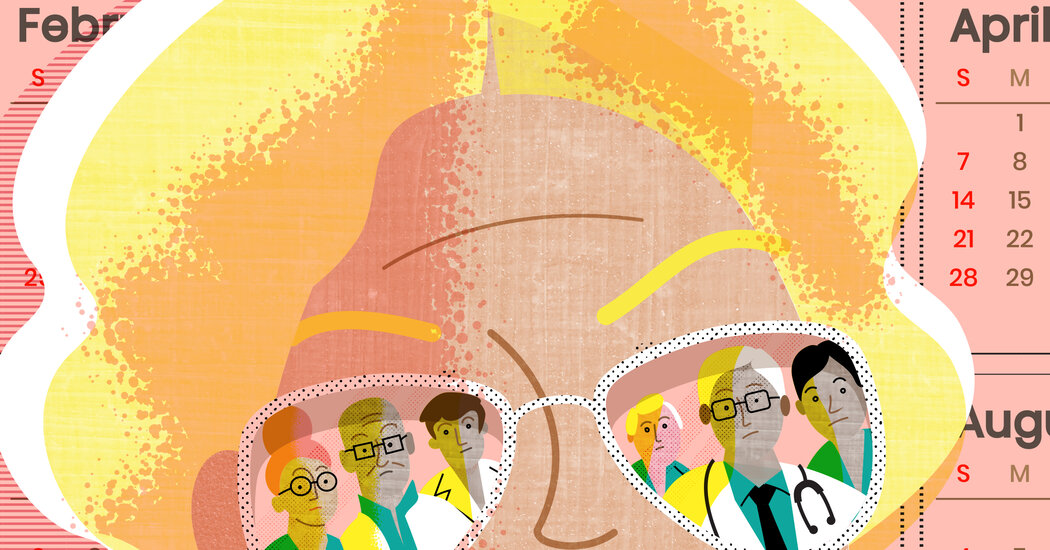Medical care can be wearying and time-consuming, especially for seniors. Researchers are beginning to quantify the burdens.
Deana Hendrickson sometimes feels daunted by the demands of the medical system. “Every body part has a doctor,” she lamented. “I hate it.”
Ms. Hendrickson reeled off a long list of her health care providers: a primary care doctor; a cardiologist, because she has mild heart disease and a concerning family history; a lung surgeon and a pulmonologist who oversee an annual scan because of her family history of lung cancer.
Plus an ophthalmologist, a gynecologist, a urologist, a podiatrist, a gastroenterologist — “and I just came back from the dentist.”
She estimates that with scans, imaging and tests, she spends two dozen days a year engaged with some sort of provider. Most of them, she added, practice in Santa Monica, Calif., where she used to live, now an hour’s drive from her home.
At 65, providing five-day-a-week care (with her husband) for three grandsons under 5, she’s reasonably healthy and active. But her regimen “makes me feel like a sick person,” Ms. Hendrickson said.
“I’m like an older car that always needs more maintenance. There’s so many other things I’d rather be doing.”
